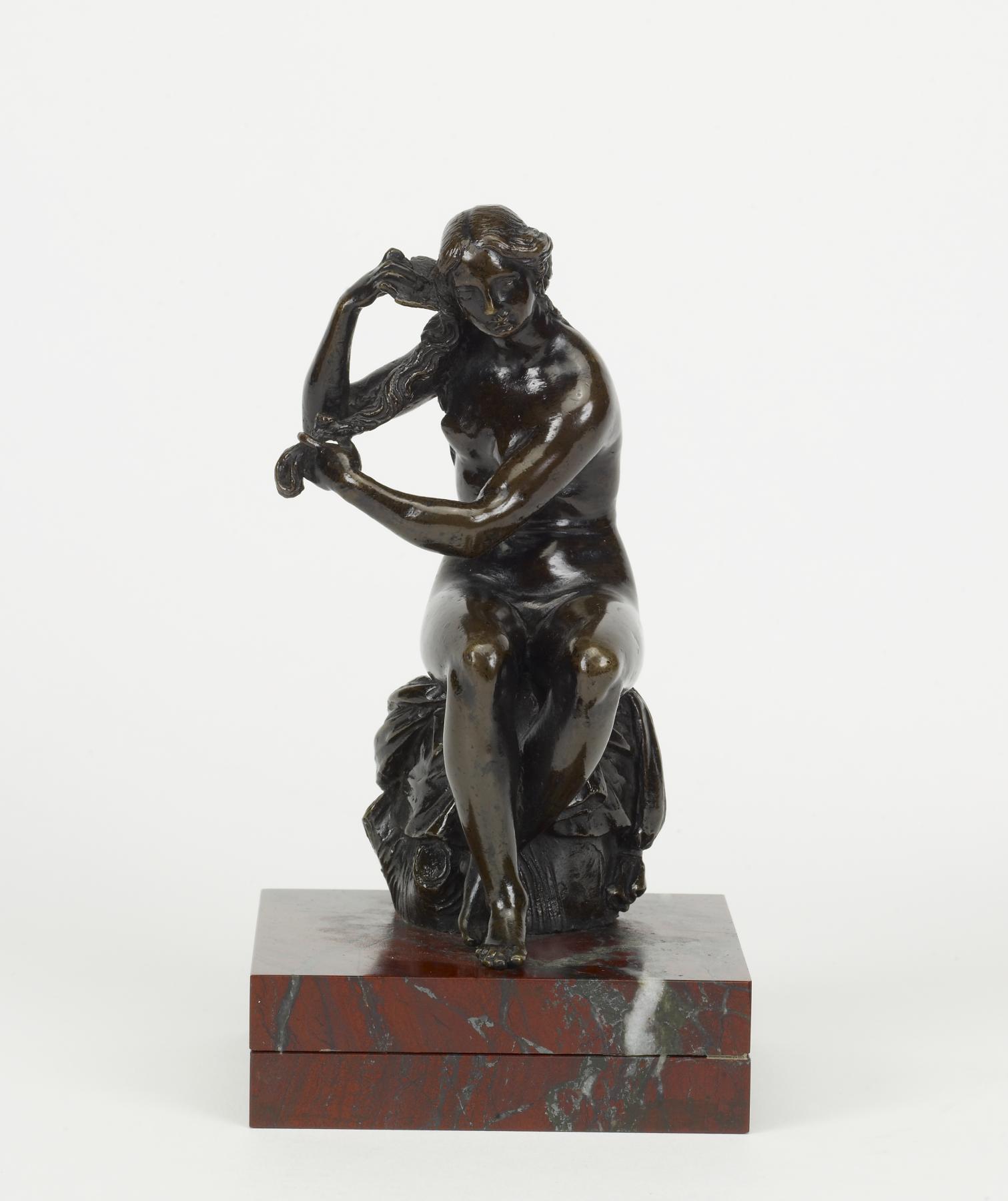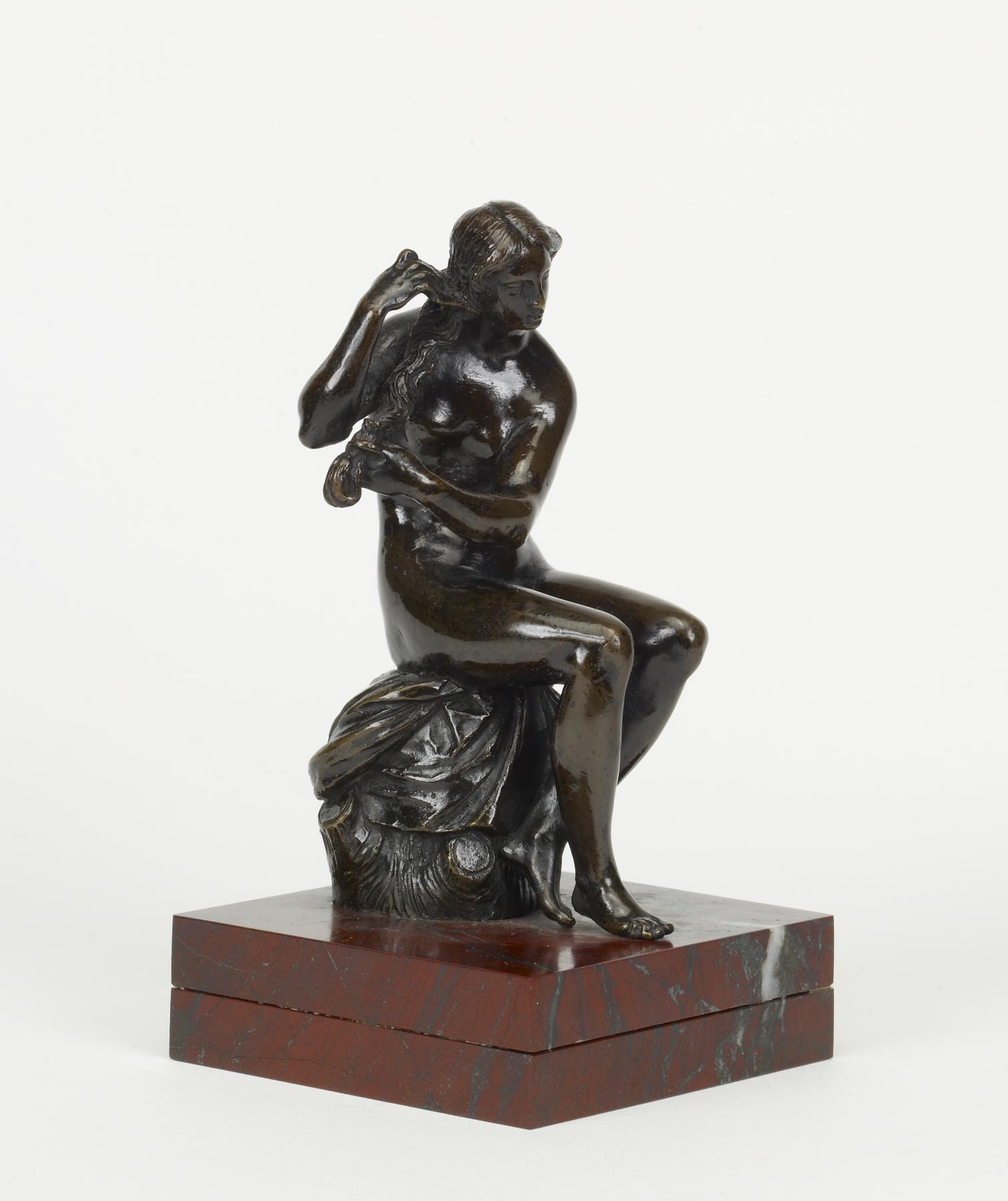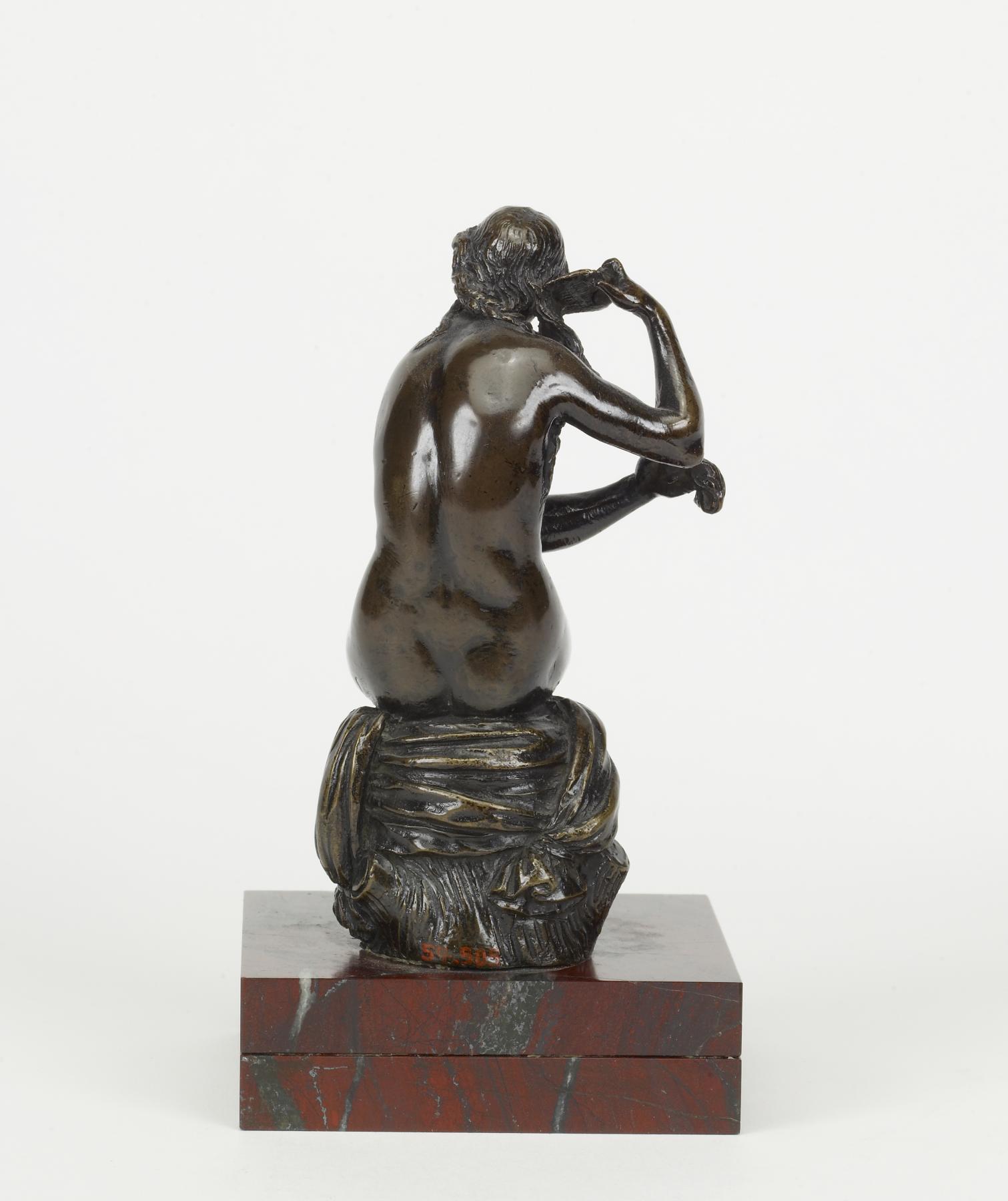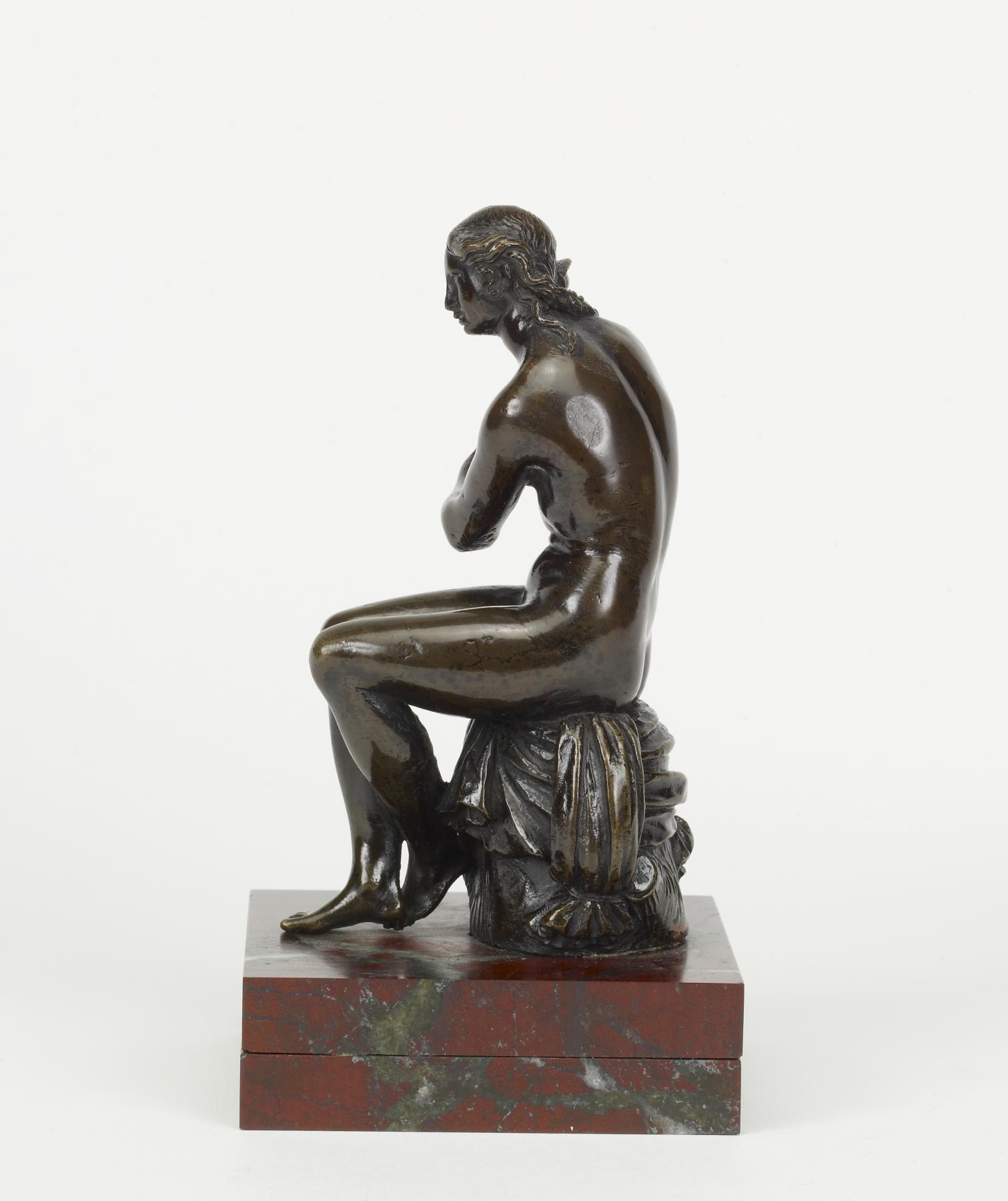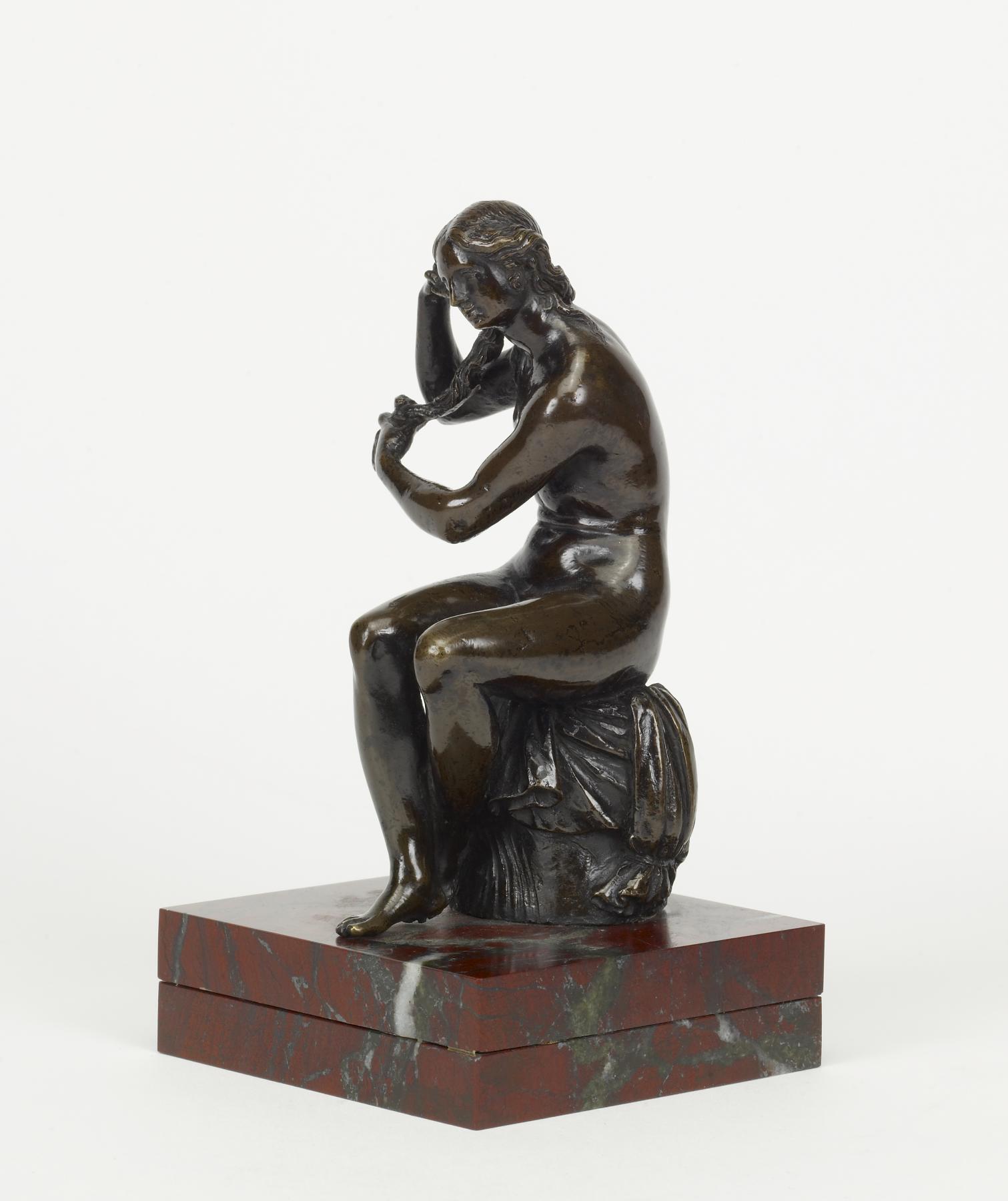Woman Combing Her Hair
(Baroque Europe )
In antiquity, sculptors often depicted Venus bathing or doing her hair. During the Renaissance, a bathing woman (not always Venus) was again a popular subject for small bronzes. It offered the male collector the voyeuristic pleasure of gazing at an unclothed woman who is unaware of being observed.
Giambologna created famous small bronzes of this type with gracefully elongated bodies. Barthelemy Prieur, the sophisticated "Sculptor to the King" to Henry IV of France, was influenced by them but created statuettes in a more intimate format, depicting different moments of a woman's personal toilette in naturalistic poses. Conceived for the private enjoyment of the collector, they invite one's touch with their smooth curving backs. Groupings of these figures in 17th-century inventories suggest they were collected in "sets." "Woman Combing Her Hair" is not as well finished as the other two and is not from the same set.
Provenance
Provenance (from the French provenir, 'to come from/forth') is the chronology of the ownership, custody, or location of a historical object.
Henry Walters, Baltimore [date and mode of acquisition unknown]; Walters Art Museum, 1931, by bequest.
Conservation
| Date | Description | Narrative |
|---|---|---|
| 8/24/1977 | Treatment | cleaned |
Geographies
France, Paris (Place of Origin)
Measurements
H: 5 1/4 in. (13.4 cm)
Credit Line
Acquired by Henry Walters
Location in Museum
Not on view
Accession Number
In libraries, galleries, museums, and archives, an accession number is a unique identifier assigned to each object in the collection.
In libraries, galleries, museums, and archives, an accession number is a unique identifier assigned to each object in the collection.
54.505

